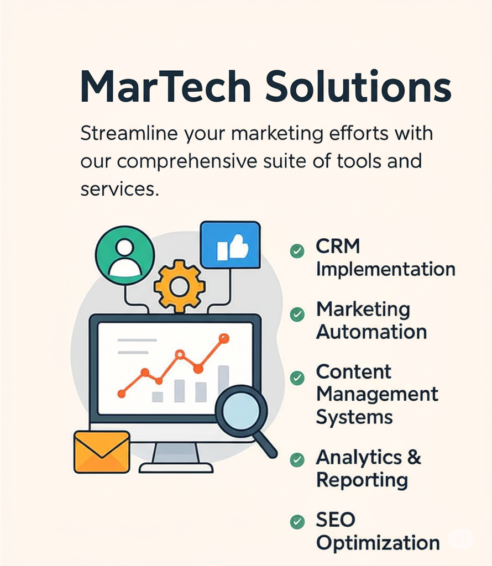
In today’s fast-evolving business landscape, Customer Relationship Management (CRM) systems are no longer just digital address books—they are the backbone of data-driven, customer-centric organizations. The modern CRM must seamlessly integrate with a host of business tools—marketing automation, accounting, ERP, customer support, and even IoT devices—to ensure operational efficiency, real-time insights, and enhanced customer satisfaction. As digital transformation accelerates, organizations that leverage integrated CRM solutions are better positioned to drive growth, streamline processes, and deliver exceptional customer experiences.
Why Integrating CRM with Other Business Tools is Essential
Today, not only is the management of relations with customers included in the area of application of the concept of CRM. Today, CRM systems are important in synthesizing various business processes that ensure that different departments share information. The integration of the CRM with other business applications including the marketing automation, accounting, and customer support systems is that it enables an organization to run on correct and consistent information. The two systems cause improved decisions in the organization as well as the optimization of servitude to the customers and organization enhancement.
The Benefits of CRM Integration

1. Unified Data Across Systems:
Synchronization of your CRM with other applications assures that every department with the data in it gets the updated information. This makes it possible to cut back on the creation of data silos and inconsistencies which lead to wrong decisions being made.
2. Streamlined Operations:
Integration of the system as a CRM is an important advantage of automation. With integration of your CRM with elements such as email marketing and customer support, this means that many repetitive tasks are handled by the system.
3. Enhanced Customer Experience:
A well-integrated CRM system allows for a 360-degree view of the customer, leading to personalized interactions and quicker response times. This directly impacts customer satisfaction and loyalty.
Challenges of CRM Implementation

However, as has been mentioned, there are implementation barriers of CRM that organisations must overcome. Below is a list of the most frequently reported CRM implementation problems
1. Data Migration Problems:
The most painful issue related to CRM is data migration issue It is one of the most predominant challenges to CRM implementation. Migrating data from old systems to a new CRM may result in loss of data, data distortion or creation of a duplicate copy if not done in the right way. Data migration should also be well done because it will require time and proper execution to do so.
2. User Resistance:
Another important question is user adoption. People can always resist the change especially where it affects their areas of working to a certain extent where their resistance is valid. In order to minimise this resistance, it is therefore very important for one to ensure that adequate training is given to each of the personnel and show them how the new CRM system is a benefit to him or her.
3. Technical Compatibility:
One of the most common issues with CRM is technical: it can be rather cumbersome to deploy it with other, older or just incompatible ones, at that. It means that needs arise from time to time to make sure that you are using the appropriate CRM software that will integrate with other tools that are already in practice.
Creating a CRM Implementation Roadmap
However, for the integration of the CRM with other business tools to be effective, mapping should be done in compliance with the following CRM implementation plan. This strategy should include each of the phases of integration including planning phase, data migration phase, training phase as well as the optimization phase.
1. Define Clear Objectives:
I always like to ask the question, ‘What is the aim or objective of the integration, before beginning the process? No matter if it is about the communication with customers, optimization of sales activities or the automation of marketing, goals will help clarify your integration.
2. Select the Right CRM:
Selecting the right CRM system is very important if successful management of the complex process is to be achieved. Ensure that the CRM software you are going to purchase has a good integration facility and matches with your business requirements. For example, CRM is very effective in integration; this is why many companies interested in integration choose it.
3. Plan the Integration Process:
As soon as you choose a CRM, plot how you will implement such system step by step. This entails logical deployment of data, and configuring of systems then doing tests to check that all functions properly.
4. Train Your Team:
One of the critical elements of the approach’s success is the training of all participants in the programme. It also helps to organize extensive training sessions in order to explain to your team how the new system works, and how it will help for their work.
5. Monitor and Optimize:
Finally, that means frequently maintaining the introduced changes after the integration has been made. Collect responses from users and alter things as deemed fit to ensure that the system operates to the optimum.
Overcoming CRM Implementation Issues

When these are realized, it becomes easier to cope and plan on how to counter them when carrying out CRM integration. Here are strategies to overcome some common CRM implementation issues:Here are strategies to overcome some common CRM implementation issues
1. Handling Data Migration:
In order to avoid difficulties associated with migration of data, it is recommended that data is cleansed, the fields to be migrated are identified, and the tests are run more than once before the last run. This will help to avoid cases whereby the data collected is inaccurate or contains a lot of errors.
2. Encouraging User Adoption:
For adoption, use inputs by employees in selection and provide support and training to users adequately. Why not demonstrate how much easier or efficient your new system is going to be for the workers?
3. Ensuring Technical Compatibility:
Choose a CRM vendor that will be able to provide constructive assistance in integration with your other tools. It is also possible to overcome the problem via middleware or API to connect two or more systems.
Conclusion
Incorporating the CRM with other business applications is crucial for organizations that strives to strengthen organizational performance and customer relations as well as seeks to make the right decisions. Knowing the troubles of implementing CRM and adhering to the CRM implementation map, you are confident of the right implementation of the CRM system to boost on growth and efficiency.
For more insights about CRM visit MarTech Panthers.
📩 Want to fix your automation? Let’s talk.
📞 Call us: +91 9762910165
📧 Email:info@martechpanthers.com
🌐 Visit: https://martechpanthers.com/



